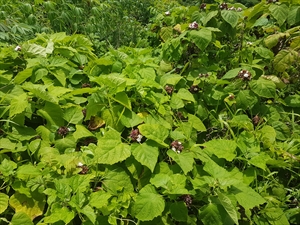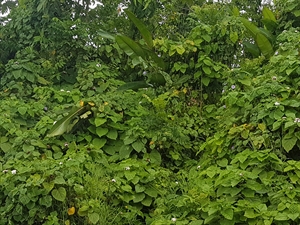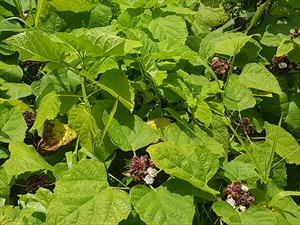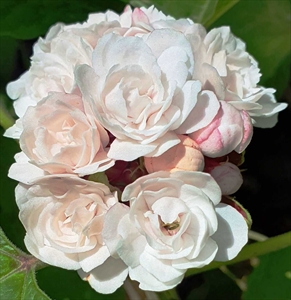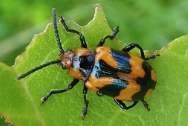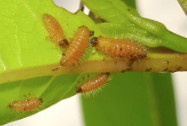- Widespread. Asia, North, South and Central America, Caribbean, Oceania. In many Pacific islands.
- Invasive, grows in shade and full sunlight, in disturbed places and fertile (Oceanic island) soils. Forms dense stands from root suckers in pastures, plantations, along streams, and at forest edges.
- Perennial shrub up to 3 m tall. Stems and branches four-sided with fine hairs. Leaves, 6-20 cm long, opposite, heart-shaped, soft short hairs, wavy margins and sharp tips. Disagreeable smell when crushed. Flowers, 2-3 cm across, white to pink, double, sterile, in dense cluster at tops of stems. Fragrant in the evening.
- Spread: root suckers; trade in ornamentals.
- Biosecurity: high risk of introduction. Available on internet.
- Biocontrol: potential with chrysomelid beetle, and fungal rust. Need to check identification of weed in Pacific.
- Cultural control: hand weeding, digging, slashing, cultivation (probably not successful in wet soil).
- Chemical control (from literature): (i) foliar (picloram; triclopyr; 2,4-D; metsulfuorn-methyl; picloram + triclopyr; picloram + 2,4-D; dicamba + 2,4-D); (ii) cut-stump (same herbicides); (iii) soil (fluroxypyr). In Fiji, glyphosate or metsulfuron-methyl.
